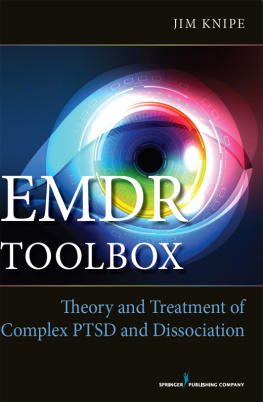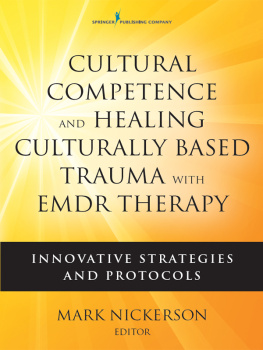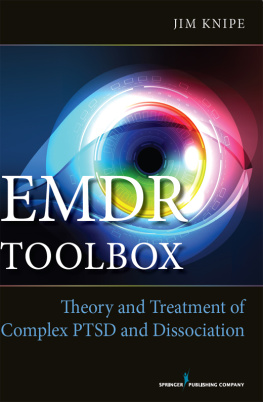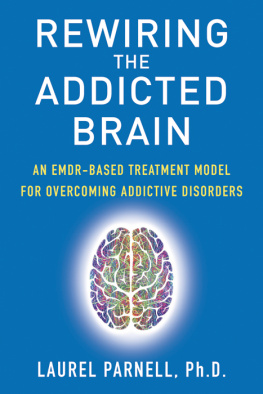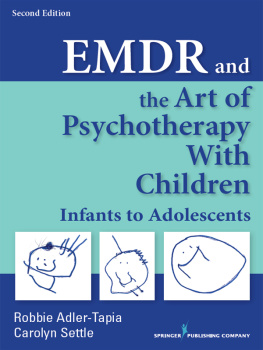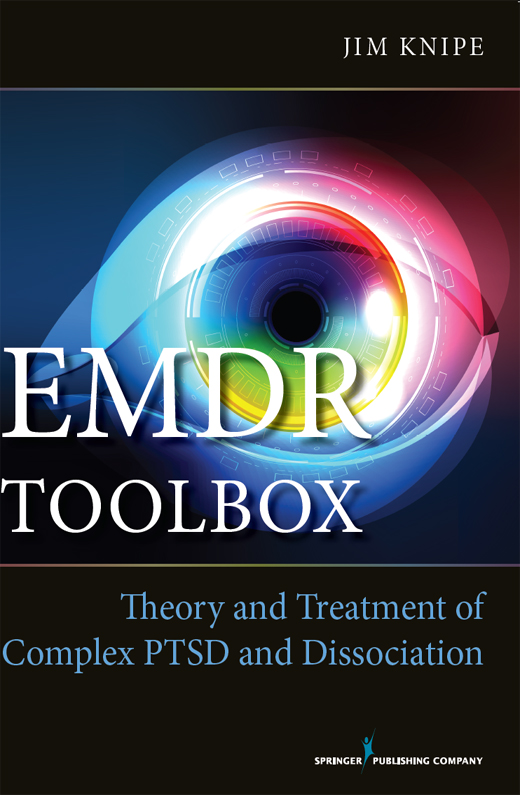James Knipe - EMDR Toolbox: Theory and Treatment of Complex PTSD and Dissociation
Here you can read online James Knipe - EMDR Toolbox: Theory and Treatment of Complex PTSD and Dissociation full text of the book (entire story) in english for free. Download pdf and epub, get meaning, cover and reviews about this ebook. year: 2014, publisher: Springer Publishing Company, genre: Religion. Description of the work, (preface) as well as reviews are available. Best literature library LitArk.com created for fans of good reading and offers a wide selection of genres:
Romance novel
Science fiction
Adventure
Detective
Science
History
Home and family
Prose
Art
Politics
Computer
Non-fiction
Religion
Business
Children
Humor
Choose a favorite category and find really read worthwhile books. Enjoy immersion in the world of imagination, feel the emotions of the characters or learn something new for yourself, make an fascinating discovery.
- Book:EMDR Toolbox: Theory and Treatment of Complex PTSD and Dissociation
- Author:
- Publisher:Springer Publishing Company
- Genre:
- Year:2014
- Rating:5 / 5
- Favourites:Add to favourites
- Your mark:
EMDR Toolbox: Theory and Treatment of Complex PTSD and Dissociation: summary, description and annotation
We offer to read an annotation, description, summary or preface (depends on what the author of the book "EMDR Toolbox: Theory and Treatment of Complex PTSD and Dissociation" wrote himself). If you haven't found the necessary information about the book — write in the comments, we will try to find it.
[R]eading this book has given me a whole host of new ideas about working with complex and dissociative clients... Clear and engaging, peppered with relevant case histories, this book would make an important addition to anyones EMDR-related book collection. -- Dr. Robin Logie, EMDR UK & Ireland
This book is the first to bring together in one volume an overview of the principal issues in treatment of dissociative disorders in complex PTSD, and a description of the integration of specific EMDR-related interventions or tools with other psychotherapeutic treatments. These tools can significantly extend the therapeutic power of EMDR-related methods. Each intervention is examined in detail with accompanying transcripts illustrating the nuances and variations in how the intervention is applied. It is written by a highly esteemed EMDR scholar, trainer, international speaker, and author who is an EMDRIA-designated Master Clinician.
The book discusses how the concepts and vocabulary of other models of dissociation (particularly the Theory of Structural Dissociation of the Personality, and the Internal Family Systems model) translate directly into EMDRs Adaptive Information Processing language. It presents detailed descriptions of specific EMDR-related tools that are useful in facilitating and safely accelerating therapeutic progress with clients suffering from Complex PTSD. These include such standard EMDR procedures as Trauma Processing and Resource Installation, several conceptual/cognitive/phenomenological models of dissociative personality structures and symptoms, and specific EMDR interventions for resolving dysfunctionally stored post-traumatic elements. The book will be of great value to therapists who wish to extend their use of basic EMDR with easier clients to using it effectively with more complex clients.
Key Features:
- Provides a theoretical framework to guide assessment and treatment of clients with Complex PTSD
- Serves as a hands-on resource for using specific EMDR procedures
- Describes each intervention in detail, illustrating the nuances and variations in different applications
- Includes specific AIP tools, actual therapy scripts, and client drawings
- Covers DSM-V PSTD criteria
James Knipe: author's other books
Who wrote EMDR Toolbox: Theory and Treatment of Complex PTSD and Dissociation? Find out the surname, the name of the author of the book and a list of all author's works by series.

